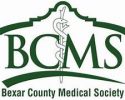Electronic health records (EHRs) have become a crucial — and mandatory — part of standard medical care, collecting in one place specific clinical data for patients, as well as offering healthcare providers the ability to share information with others regarding their care. But while extremely useful, EHRs are, nevertheless, often a burden for physicians, taking up time that could be spent actually interacting with and treating patients.
The solution for many practices is a clinical scribe, a paid care professional who enters patient data into an EHR system instead of the physician. There are two types of clinical scribes: an in-office scribe, who physically follows the physician and documents patient encounters as they occur throughout the day, and a virtual scribe, who listens from a remote location and does the same. In either case, clinical scribes free physicians from much of their data entry duties and often contribute to more efficient and comprehensive electronic health records. Here’s why:
Clinical Scribe Have More Time Than Doctors to Spend on Documentation
A clinical scribe’s main job is to transcribe information during patient/physician encounters. Unlike doctors, who must also assess and treat the patient, clinical scribes are only responsible for entering notes, orders, referrals and/or prescriptions into the EHR system. This means clinical scribes have a lot more time per patient to update data records, allowing them to be more comprehensive in detail (than a doctor would be) with each one.
Clinical Scribes Enter Data and Real-Time
Clinical scribes enter data in real time. Thus, EHR documentation of each patient visit is immediately accessible following the encounter. In many instances, doctors have to wait until the end of the day to upload their notes, possibly delaying subsequent care for the patient and/or risking proper recollection of exam details. Employing the services of a clinical scribe ensures that patient information is quickly filed, accurate and available when needed.
Clinical Scribes Facilitate Better Physician Recall and Better Care
In addition, because clinical scribes record data in real time, they have access to the patient’s record and are able to assist the physician with recall and verify history details during an exam. Indeed, with the scribe’s assistance, physicians are able to more quickly access additional information, have more time for the patient and can deliver better care (all of which enrich EHR documentation).
Clinical Scribes Enable Doctors More Time for Additional Notes
Furthermore, clinical scribes enable doctors the time they need to enter better clinical notes of their own. By not having to document the small details of patients’ visits, physicians often feel less overworked and less stressed and are able to focus on composing their own notes to supplement those of the scribe if they choose.
Want to Learn More?
Clinical scribes are an asset for today’s medical care. To learn more about using clinical scribes to improve the speed and quality of your EHR documentation, please contact Provider’s Choice Scribe Services.



